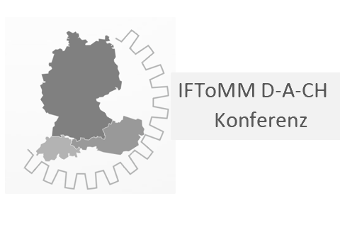Online-Optimierung von Geschwindigkeitsprofilen entlang vorgegebener Bahnen unter Berücksichtigung von Achsruckbeschränkungen
Der vorliegende Beitrag präsentiert einen Algorithmus zur Berechnung eines näherungsweise zeitoptimalen Geschwindigkeitsprofils entlang einer vorgegebenen Bahn. Es werden Beschränkungen der Geschwindigkeit entlang der Bahn und Beschränkungen der an der Bewegung beteiligten Achsen bis zur dritten Ableitung, dem Ruck, betrachtet. Der Algorithmus baut auf der Struktur einer Werkzeug- oder Handlingmaschinensteuerung auf, die eine Werkzeugspitze entlang einer vorgegeben oder auch intern modifizierten Bahn verfährt. Dabei verwendet der Algorithmus die intern berechneten Zusammenhänge zwischen Achs- und Bahnkoordinaten. Die Anzahl der Maschinenachsen, die an der Bewegung beteiligt sind, ist theoretisch beliebig.
Für eine schnelle, näherungsweise zeitoptimale Berechnung des Profils wird die vorgegebene Raumkurve gezielt in mehrere Teilabschnitte zerlegt, die Übergangsbedingungen gewählt und in jedem dieser Abschnitte ein Geschwindigkeitsprofil mittels einer Vorwärts-/Rückwärtsrechnung konstruiert. Dabei erweitert der Beitrag den Lösungsansatz aus [Mattmüller, J.; Gisler, D.: Calculating a near timeoptimal jerk-constrained trajectory along a specified smooth path. Springer, The International Journal of Advanced Manufacturing Technology. (2009) 45, S. 1007.]. Im
Mittelpunkt stehen die Definition des Geschwindigkeitsprofils, als einmal stetig differenzierbarer Spline mit stückweise konstantem Ruck, die Aufteilung der Bahn in einzelne Berechnungsabschnitte und die Simulationsergebnisse mit Daten
einer Fünfachsbearbeitung. Ein Nachweis zur Optimalität und online-Einsetzbarkeit der Lösung wird nicht angegeben.
This paper presents an algorithm for the calculation of an approximately time-optimal velocity profile along a given path. Restrictions of the velocity along this path and restrictions of the axes involved in the motion up to the third derivative, the jerk, are considered. The algorithm is based on the structure of a tool or handling machine control with a theoretically arbitrary number of machine axes, which moves a tool tip along a given or internally modified path. The algorithm uses their internally calculated relationships between axis and path coordinates. For a fast and approximately time-optimal calculation of the profile, the given path is specifically divided into several sub-sections, transition conditions are selected and a velocity profile is constructed in each of these sections by means of a forward/backward calculation. The contribution extends the solution approach from [Mattmüller, J.; Gisler, D.: Calculating a near timeoptimal jerk-constrained trajectory along a specified smooth path. Springer, The International Journal of Advanced Manufacturing Technology. (2009) 45, S. 1007.]. In focus is the definition of the velocity profile, as C1 spline with piecewise constant jerk, the splitting into parts for the calculation and the simulation results with data of a five-axis machining. A proof of the optimality and online usability of the solution is not given.

